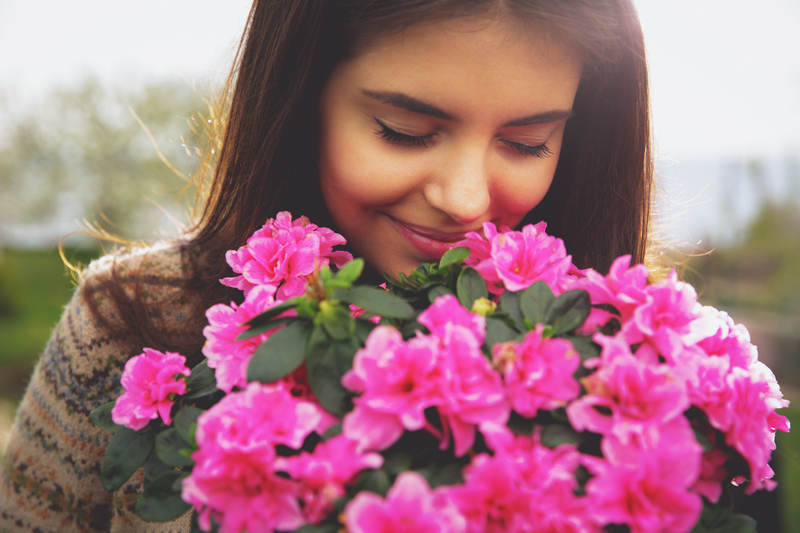Spotlight on Hydrangeas: Expert Nurturing Techniques
Posted on 22/08/2025
Spotlight on Hydrangeas: Expert Nurturing Techniques
Hydrangeas are beloved by garden enthusiasts for their remarkable beauty, lush blooms, and adaptability to various landscapes. Whether you are an experienced gardener or a budding enthusiast, mastering expert nurturing techniques for hydrangeas can transform a simple garden into a vibrant, floral paradise. In this comprehensive guide, we will delve deep into the best ways to care for your hydrangeas, ensuring that they not only survive but thrive.
Introduction to Hydrangeas
Hydrangeas, scientifically known as Hydrangea spp., are quintessential flowering shrubs, famous for their captivating, globe-like blooms. Originating from East Asia and the Americas, they come in a variety of species, each displaying unique characteristics and charm. The most common types include the Mophead, Lacecap, Panicle, Oakleaf, and Climbing hydrangeas.
One of the most intriguing aspects of hydrangea care is how deeply their environment influences their growth and flower color. By understanding their needs and nuances, gardeners can optimize their hydrangea nurturing techniques for jaw-dropping results.

Understanding Different Hydrangea Varieties
Before refining your hydrangea nurturing methods, it is vital to identify which type of hydrangea you have. Each variety has distinctive care requirements and growth patterns.
Mophead and Lacecap Hydrangeas
- Mopheads (Hydrangea macrophylla) feature large, rounded flower clusters in blue, pink, or purple hues.
- Lacecaps produce flatter flower heads surrounded by showy blossoms with fertile buds in the center.
Panicle Hydrangeas
- Hydrangea paniculata boasts cone-shaped blooms, often thriving in cooler climates and tolerating more sunlight.
Oakleaf Hydrangeas
- Hydrangea quercifolia is notable for its oak-like foliage and elongated creamy-white flower clusters that mature into pink or tan shades.
Climbing Hydrangeas
- This unique variant (Hydrangea anomala petiolaris) can scale walls, fences, or trellises, offering breathtaking vertical interest in the garden.
Identifying your hydrangea's type is the first step to expert hydrangea nurturing.
Soil Selection and Preparation
Optimal soil conditions are foundational for lush, healthy hydrangeas.
Soil Quality
- Rich, well-draining soil with ample organic matter is best.
- Incorporate compost, leaf mold, or well-rotted manure prior to planting.
pH and Flower Color Manipulation
- Soil pH directly impacts flower coloration, especially in macrophylla varieties:
- Acidic soils (pH below 6): Blooms tend towards blue.
- Neutral to alkaline soils (above pH 7): Flowers shift pink or red.
- Alter soil pH by adding aluminum sulfate or garden lime as needed. Test soil before making adjustments for best results.
Hydrangea Planting Techniques
When to Plant
- The best time to plant hydrangeas is early spring or fall, avoiding periods of intense heat or frost.
Spacing and Depth
- Plant hydrangeas at the same depth as they were in the nursery container.
- Allow adequate space for air circulation--typically 3 to 10 feet apart depending on the species.
Proper Watering Techniques for Hydrangeas
As their name implies (hydra = water), hydrangeas require consistent moisture for optimal growth and bloom production.
- Deep, infrequent watering encourages strong root systems.
- Water early in the day to reduce evaporation and thwart fungal issues.
- Mulch around the base to retain moisture and stabilize soil temperature.
- During dry spells, monitor moisture levels closely, especially for new plantings.
Investing in a drip irrigation system or soaker hoses can simplify maintenance and prevent water stress.
Sunlight Requirements Explained
Sun exposure plays a significant role in hydrangea health and bloom vigor.
- Macrophylla and quercifolia hydrangeas excel in morning sun with afternoon shade.
- Panicle hydrangeas can tolerate and even prefer full sun in cooler climate regions.
- Ensure that newly planted hydrangeas are shielded from scorching midday rays, especially in hot regions.
Observing your garden's microclimates will help you choose the ideal spot for planting, ensuring robust blossoms and foliage.
Nutrient Management: Fertilizing Hydrangeas
Understanding Nutritional Needs
- Feed hydrangeas with a balanced, slow-release fertilizer in early spring and again in mid-summer.
- For blue blooms, favor fertilizers low in phosphorus and high in potassium (the middle number of N-P-K rating should be as low as possible).
- Organic feeding--such as compost tea or worm castings--can steadily promote vibrant growth.
- Avoid excessive nitrogen, which may result in lush leaves but sparse blooming.
Signs of Nutrient Deficiency
- Yellowing leaves may signal iron or magnesium deficiencies. Apply chelated iron or Epsom salts as needed.
- Pale blooms can be revitalized with a balanced feeding regimen.
Pruning Hydrangeas Like an Expert
Proper hydrangea pruning is key for flower production and plant health, but techniques vary among types.
Old Wood vs. New Wood
- Macrophylla and oakleaf hydrangeas: Bloom on "old wood"--last year's growth. Prune after flowering (late summer) to avoid cutting off next year's buds.
- Panicle and smooth hydrangeas: Bloom on "new wood"--the current year's growth. Prune in late winter or early spring before new growth begins.
Pruning Tips
- Always use clean, sharp tools to prevent disease.
- Remove dead or diseased wood as needed.
- Thin out overcrowded stems to improve airflow and reduce fungal problems.
- Deadheading spent blooms keeps plants tidy and encourages fresh flowering.
Preventing and Treating Common Hydrangea Problems
While hydrangeas are relatively hardy, they are susceptible to a handful of pests and diseases. Effective nurturing involves early detection and integrated management techniques.
Common Pests
- Aphids & Spider Mites: Spray with soapy water or introduce beneficial insects such as ladybugs.
- Slugs & Snails: Use barriers or diatomaceous earth to protect tender shoots.
Fungal Diseases
- Powdery Mildew: Improve airflow by thinning stems and removing affected leaves.
- Leaf Spot: Remove and dispose of infected foliage, avoid overhead watering.
Proactive cultural practices are the best defense--maintain good air circulation, avoid wetting foliage, and clean up debris regularly.
Seasonal Care for Hydrangeas
Spring
- Apply fresh mulch, fertilize, and check soil moisture.
- Monitor budding and protect from late frosts with covers if necessary.
Summer
- Monitor water needs, especially during heatwaves.
- Deadhead and enjoy peak blooms.
Fall
- Stop fertilizing and allow plants to harden off for winter.
- Mulch deeply to protect roots from cold snaps.
Winter
- In severe climates, wrap hydrangeas with burlap or cover with pine boughs for extra insulation.
- Avoid unnecessary pruning at this time.
Advanced Hydrangea Nurturing Techniques
For gardeners looking to take their hydrangea care to the next level, consider these advanced strategies:
- Propagation: Multiply favorite varieties by layering, dividing, or rooting cuttings in spring or summer.
- Staking: Large-flowered types may require discreet staking to support heavy blooms.
- Companion planting: Integrate hydrangeas with shade-loving perennials like hostas, ferns, or astilbes for a lush, layered look.
- Experiment with container hydrangeas for patios or balconies--ensure pots have adequate drainage and monitor moisture closely.
Innovative pruning such as "Chelsea chop" can stagger blooming for extended seasonal interest, particularly in panicle hydrangeas.
Benefits of Growing Hydrangeas
- Year-Round Interest: Many hydrangeas offer stunning foliage in autumn and attractive bark in winter.
- Wildlife Habitat: Flowers attract pollinators while dense growth provides shelter for beneficial insects.
- Low Maintenance: Once established, hydrangeas are resilient, rewarding minimal care with prolific blooms.

Frequently Asked Questions About Nurturing Hydrangeas
1. Why aren't my hydrangeas blooming?
Common causes include pruning at the wrong time, late frosts damaging buds, insufficient sunlight, or too much nitrogen fertilizer. Review your care practices and adjust as needed.
2. Can I change the color of my hydrangea flowers?
Yes! For macrophylla varieties, altering soil pH can shift flowers from pink to blue or vice versa. Use aluminum sulfate for blue and garden lime for pink blooms.
3. How do I revive a wilted hydrangea?
Check the soil moisture--hydrangeas wilt quickly when dry. Water deeply and mulch to retain moisture. If potted, ensure good drainage.
4. Do hydrangeas do well in containers?
Many compact varieties thrive in pots. Use quality potting mix, ensure drainage holes, and water more frequently than ground-planted hydrangeas.
Conclusion: Mastering Hydrangea Nurturing for Spectacular Gardens
Spotlight on Hydrangeas: By combining expert nurturing techniques with a thorough understanding of your hydrangea's species and local conditions, you can cultivate bushes that astonish with their blooms year after year. Remember: the keys to success are rich soil, adequate moisture, balanced nutrients, appropriate sunlight, and timely pruning. Whether you're growing for vibrant cut flowers or a show-stopping border, hydrangeas offer stunning rewards for attentive care.
Embrace these professional hydrangea nurturing methods, stay observant, and let your garden's hydrangea display become a true floral masterpiece!
Latest Posts
Reveal the blossom personifying your unique energy
Spotlight on Hydrangeas: Expert Nurturing Techniques
Low Maintenance Office Plants for a Stress-Free Space





